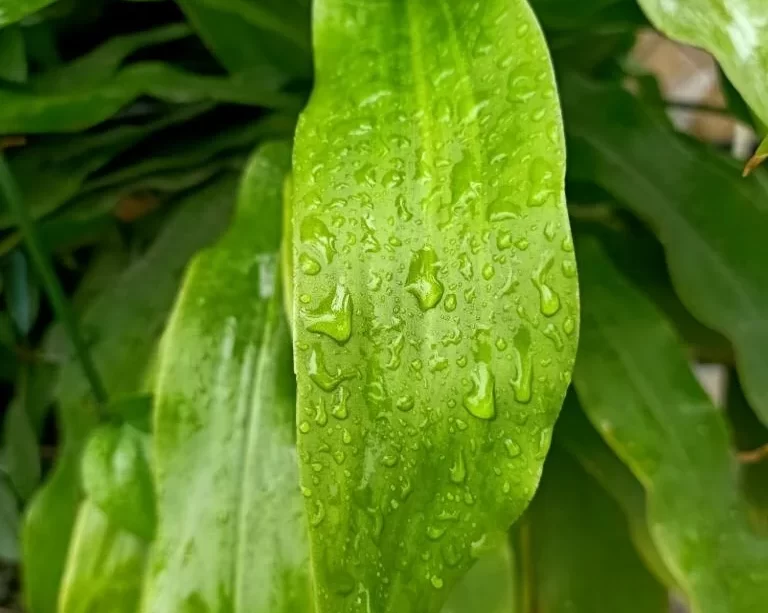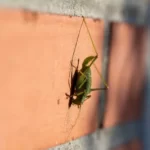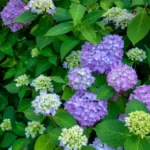Mass Cane plants, scientifically known as Dracaena fragrans, are prized for their elegant appearance and air-purifying qualities. Their lush foliage and architectural presence can transform any indoor space. However, watching a Mass Cane plant deteriorate can be disheartening. This article delves into the art of rescuing a dying Mass Cane, offering you guidance on how to revive its once-vibrant splendor. Saving a struggling Mass Cane requires patience, attention, and a few crucial steps. Let’s embark on the journey of restoring your Mass Cane to health and vitality.
- 🌱 PERFECT BLEND OF NUTRIENTS – Give your succulent plants everything they need to grow up healthy! Our 3-1-2 liquid concentrate has all of the essential nutrients that your plants crave.
- 🌱 MIX WITH WATER – Designed to blend with water to provide a single application to use every other watering cycle. 1-2 tsp per 8 cups water.
- 🌱 SUITABLE FOR ALL VARIETIES – You can use our fertilizer on just about any kind of succulent plant. It’s great for seedlings and mature plants alike.
- 🌱 SPECIALLY DESIGNED PREMIUM FORMULA – Special blend enables maximum absorption for plant growth and vitality.
- 🌱 DURABLE PACKAGING – This liquid concentrate comes in a sturdy, 8 oz sealed bottle. Store it in a safe, dry place and you can count on it to stay in great condition for a long time to come.
Identifying the Problem
Before you can nurse your dying Mass Cane plant back to health, it’s essential to pinpoint the issues that are causing its decline. Here’s how to recognize the signs of a struggling Mass Cane:
- Wilting: If your Mass Cane is wilting or its leaves are drooping, it may be suffering from improper care or environmental stress.
- Yellowing Leaves: Yellowing or browning of the plant’s leaves is often an indicator of moisture-related issues, such as overwatering or underwatering.
- Leaf Drop: If your Mass Cane is shedding its leaves at an alarming rate, it’s a sign that it’s under stress, and intervention is required.
Common causes of a declining Mass Cane plant include overwatering, underwatering, inadequate lighting, and pest infestations. It’s crucial to diagnose the specific problem before proceeding with corrective measures.
Adjusting Watering and Moisture
Effective moisture management is critical to saving a dying Mass Cane. Here are the steps to adjust watering and moisture levels:
- Assess Moisture Needs: Evaluate your Mass Cane’s moisture requirements by considering factors like the size of the plant, the type of pot it’s in, and the prevailing environmental conditions. Larger plants in larger pots may need less frequent watering.
- Proper Watering Technique: Water your Mass Cane thoroughly but ensure that excess water can drain from the pot. Use a well-draining potting mix to prevent waterlogged roots, which can lead to root rot.
- Moisture Control: Maintain consistent humidity levels by placing a tray of water near the plant or using a room humidifier, especially in dry indoor environments. Avoid over-misting the foliage, which can lead to fungal issues.
- Check Soil Moisture: Always check the moisture level in the soil before watering. Stick your finger about an inch into the soil. If it feels dry at this depth, it’s time to water. If it’s still moist, wait a bit longer.
- Root Health: If overwatering has led to root rot, you may need to remove the plant from its pot, trim away damaged roots, and repot it into fresh, well-draining soil. Ensure the new pot has proper drainage.
Balancing the moisture levels for your Mass Cane is crucial for its recovery. Correcting overwatering or underwatering issues will be a significant step in rejuvenating your plant and preventing further decline.
Providing Adequate Light
Adequate light is essential for the health and vitality of your Mass Cane plant. Here’s how to ensure it gets the right amount of light:
- Light Requirements: Mass Cane plants thrive in bright, indirect light. They can tolerate some direct morning sunlight, but avoid harsh, direct afternoon sun, which can scorch their leaves.
- Assessing Light Conditions: Evaluate the current location of your Mass Cane. Does it receive the right amount of light? If not, consider moving it to a spot that offers the ideal lighting conditions. South or west-facing windows with sheer curtains can provide the necessary filtered light.
- Supplemental Lighting: If natural light is insufficient, you can supplement with artificial light. A fluorescent or LED grow light can provide the right spectrum of light for your Mass Cane. Position the light source a few feet above the plant and keep it on for 10-12 hours a day.
- Rotation: To ensure even growth, rotate your Mass Cane every few weeks. This helps prevent the plant from leaning toward the light source and encourages balanced development.
Pruning and Trimming
Pruning and trimming your Mass Cane plant can promote its recovery and maintain its appearance. Here’s what you need to know:
- Remove Damaged Leaves: Carefully examine your Mass Cane for leaves that are discolored, damaged, or dead. Using clean, sharp scissors or pruning shears, trim these leaves at the base where they meet the stem. This not only enhances the plant’s appearance but also diverts energy to healthier growth.
- Encourage New Growth: Pruning can stimulate new growth. When you remove a damaged or yellowing leaf, the plant redirects its energy toward producing new leaves, which will contribute to its overall vitality.
- Shaping: Trimming the Mass Cane can help shape the plant and prevent it from becoming too leggy or unbalanced. Prune the stem tips to encourage branching and create a fuller, bushier appearance.
- Timing: Pruning is best done during the growing season, typically in spring and early summer. Avoid heavy pruning during the dormant or low-growth periods.
Addressing Pest Infestations
Pest infestations are a common cause of a declining Mass Cane. Here’s how to recognize and address them:
- Common Pests: Keep an eye out for common indoor plant pests like spider mites, mealybugs, and scale insects. These pests can infest the foliage, causing damage and stress to the plant.
- Identification: Inspect the plant for signs of pests, including webbing, small insects, sticky residue on the leaves, or visible damage such as yellowing or browning spots.
- Natural Control: Consider natural pest control methods, such as wiping the leaves with a damp cloth, using insecticidal soap, or releasing beneficial insects like ladybugs.
- Chemical Control: If the infestation is severe, you may need to resort to chemical insecticides. Choose a product labeled for use on your specific plant and follow the instructions carefully.
- Preventive Measures: Regularly inspect your Mass Cane for signs of pests, especially if you’ve recently introduced a new plant into your indoor space. Isolate new plants for a few weeks to monitor them for any hidden pests.
Addressing pest infestations promptly is crucial to prevent further damage and ensure the plant’s recovery. Maintaining a pest-free environment is essential for the long-term health of your Mass Cane plant.
Fertilizing and Nutrient Management
Proper nutrient management and fertilization are crucial for revitalizing a dying Mass Cane. Here’s how to ensure your plant receives the essential nutrients it needs:
- Nutrient Requirements: Mass Cane plants require a balanced supply of nutrients. Choose a well-balanced, water-soluble fertilizer designed for houseplants. Look for a fertilizer with equal or near-equal proportions of nitrogen (N), phosphorus (P), and potassium (K).
- Fertilization Schedule: During the growing season, typically from spring to early fall, fertilize your Mass Cane every 4-6 weeks. Dilute the fertilizer to half the recommended strength to avoid over-fertilization, which can harm the plant.
- Soil Quality: Ensure the potting mix you use is rich in organic matter and provides good aeration for the roots. If your plant has been in the same soil for an extended period, consider repotting it with fresh potting mix to replenish nutrients and improve soil quality.
- Careful Application: Apply the diluted fertilizer to damp soil to prevent root burn. Avoid getting fertilizer on the leaves, as it can cause burns and discoloration.
- Nutrient Deficiency: Monitor your Mass Cane for signs of nutrient deficiency, such as yellowing leaves or slow growth. Adjust your fertilization regimen accordingly.
Encouraging New Growth
Encouraging new growth is a critical step in the revival process of a dying Mass Cane. Here’s how to stimulate fresh foliage and overall plant vitality:
- Patience: Be patient as you wait for your Mass Cane to recover. New growth may take some time, and it might not be immediately visible. Consistent care and attention are essential during this period.
- Optimal Conditions: Ensure that the plant receives the right balance of light, moisture, and nutrients as discussed in previous sections. By providing the ideal growing conditions, you create a conducive environment for new growth.
- Pruning: Pruning and trimming, as mentioned earlier, can stimulate new growth. As you remove damaged or unhealthy foliage, the plant redirects its energy toward producing fresh leaves and shoots.
- Humidity: Maintaining higher humidity levels can also encourage new growth. You can use a humidity tray or room humidifier to achieve this.
- Regular Inspection: Continuously monitor your Mass Cane for signs of new growth. When you spot fresh shoots or leaves emerging, it’s a promising sign that your plant is on the path to recovery.
Conclusion
Saving a dying Mass Cane plant can be a rewarding endeavor, as you witness its resurgence from a state of decline to one of vibrancy and health. The process of revival involves a combination of care, patience, and diligence.
By addressing issues related to watering, light, pruning, pests, and nutrition, you can turn the tide and nurse your Mass Cane back to its former glory. Remember to provide the right conditions, watch for new growth, and adapt your care regimen as needed.
As you implement these steps, your Mass Cane will likely respond with fresh foliage and renewed vitality, bringing life and beauty to your indoor space once again. The satisfaction of rescuing a dying plant and watching it thrive is a testament to the power of nurturing nature.




